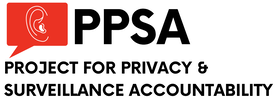|
One of the frustrations – there are many – of trying to pry answers about surveillance policy from federal agencies with Freedom of Information Act (FOIA) requests are the heavy redactions to responsive documents that protect “sources and methods.”
No one wants to blow a technique by which government intelligence and law enforcement agencies track bad guys. And no one wants an undercover agent or a confidential informant to wind up tied to a chair in dank basement because their cover was blown. And so when redactions come back with heavy ink, we are supposed to trust that the government has good reasons for holding back that information. According to an Executive Order issued by President Obama, EO 13526, information cannot be classified by the government to merely spare an agency embarrassment. Enter Paul Sperry of RealClear Investigations, who brings to light a new twist in a saga that we thought had been thoroughly explored – the problems with the FBI’s four applications to surveil Trump campaign advisor Carter Page in 2016 and 2017. Sperry reports that redactions in a “Classified Appendix” to Special Counsel John Durham’s final report have nothing to do with sources and methods. It concerns an FBI request to the secret FISA Court to allow the Bureau to continue spying on Carter Page in early 2017. The FBI indicated that it had verified a rumor that Page had worked with the Kremlin to swing the recent election in Trump’s favor. When the black ink is stripped away, Sperry reports, what did the redactions hide? They disguised the fact that the FBI took this investigative lead from a news story in The Washington Post, which the newspaper later retracted after determining it to be false. So that’s the FBI’s “source and method” deemed so sensitive that it had to be hidden from the public? It was a subscription to The Washington Post. Who knows what other embarrassments government hides with its redactions. When all else fails, the government can simply refuse to respond at all by issuing a Glomar response. This is a court-created doctrine that came out of a super-secret CIA project to refloat a sunken Soviet submarine. Ever since, the Glomar response has been used to protect information so sensitive that the government is allowed to neither confirm nor deny… anything. So forgive us if we’re jaded enough to believe that much of the black ink and Glomar responses are just the government protecting its own backside. Comments are closed.
|
Categories
All
|


 RSS Feed
RSS Feed